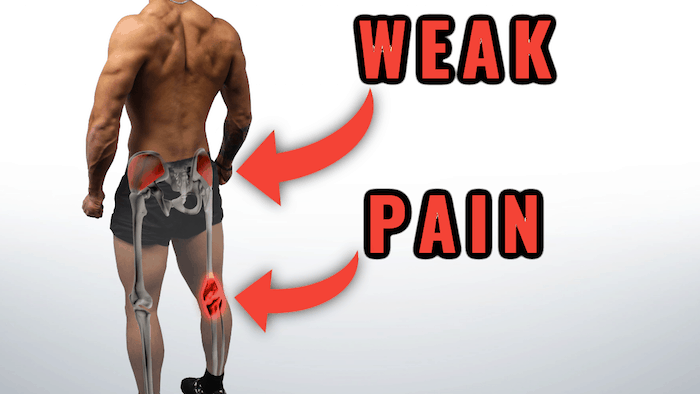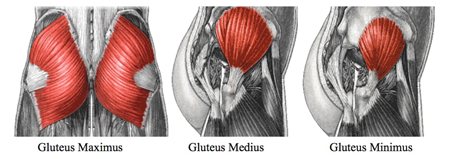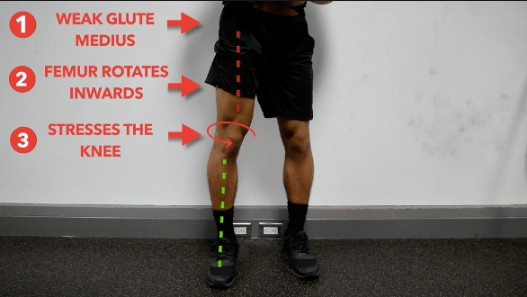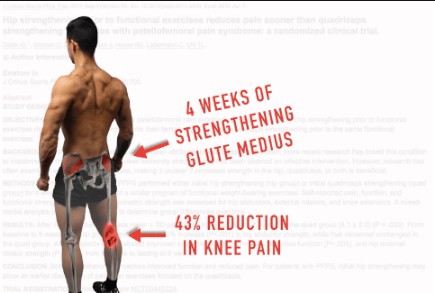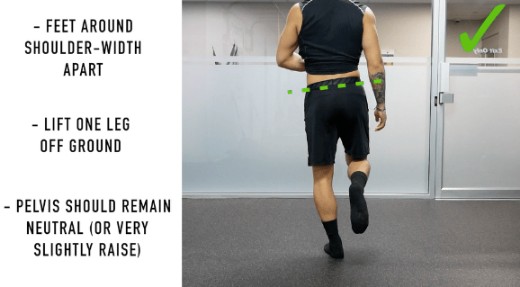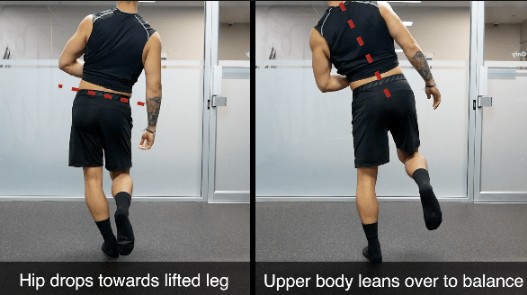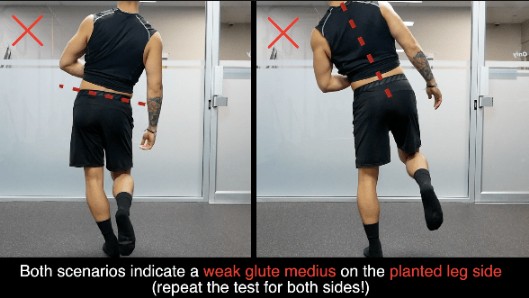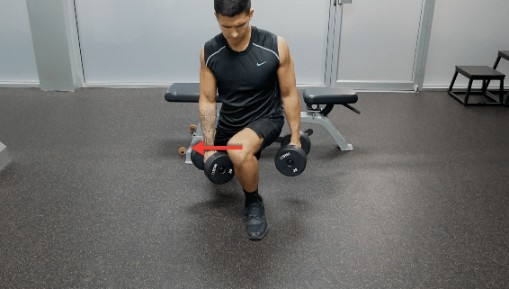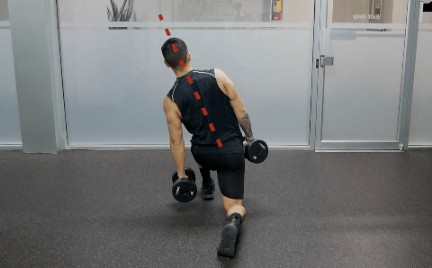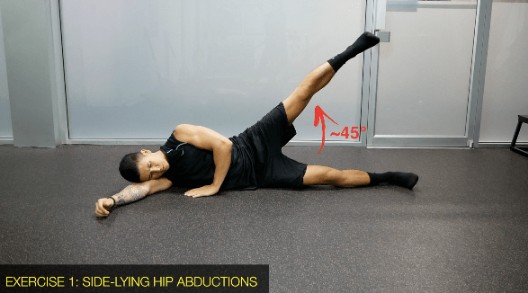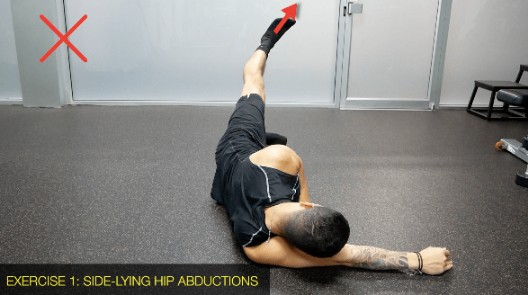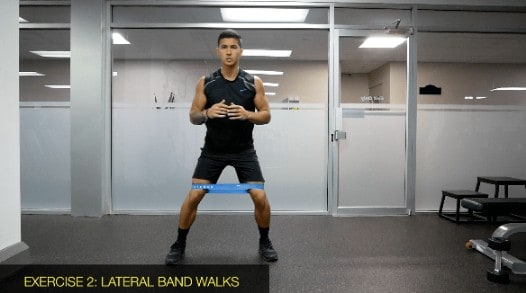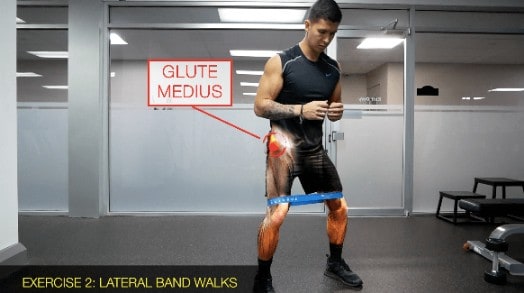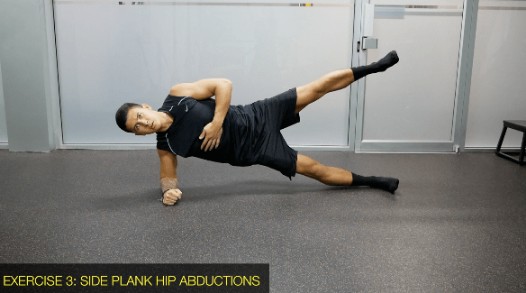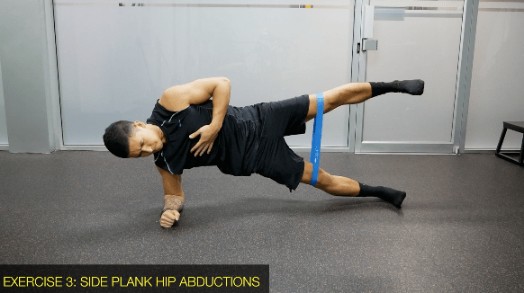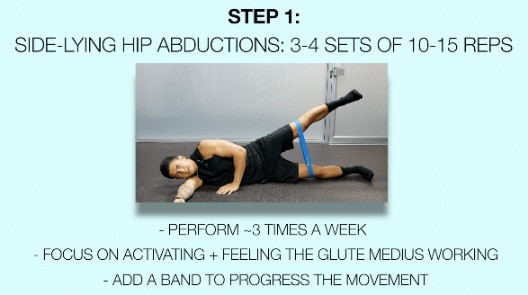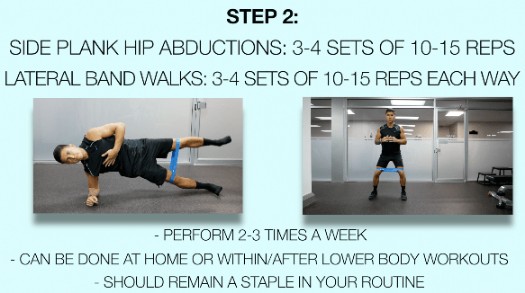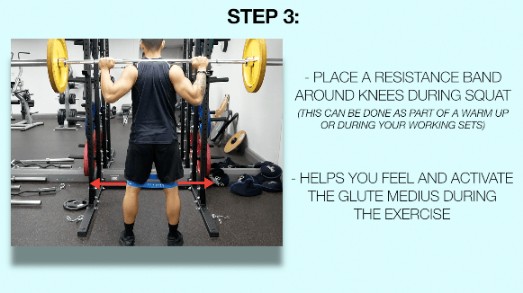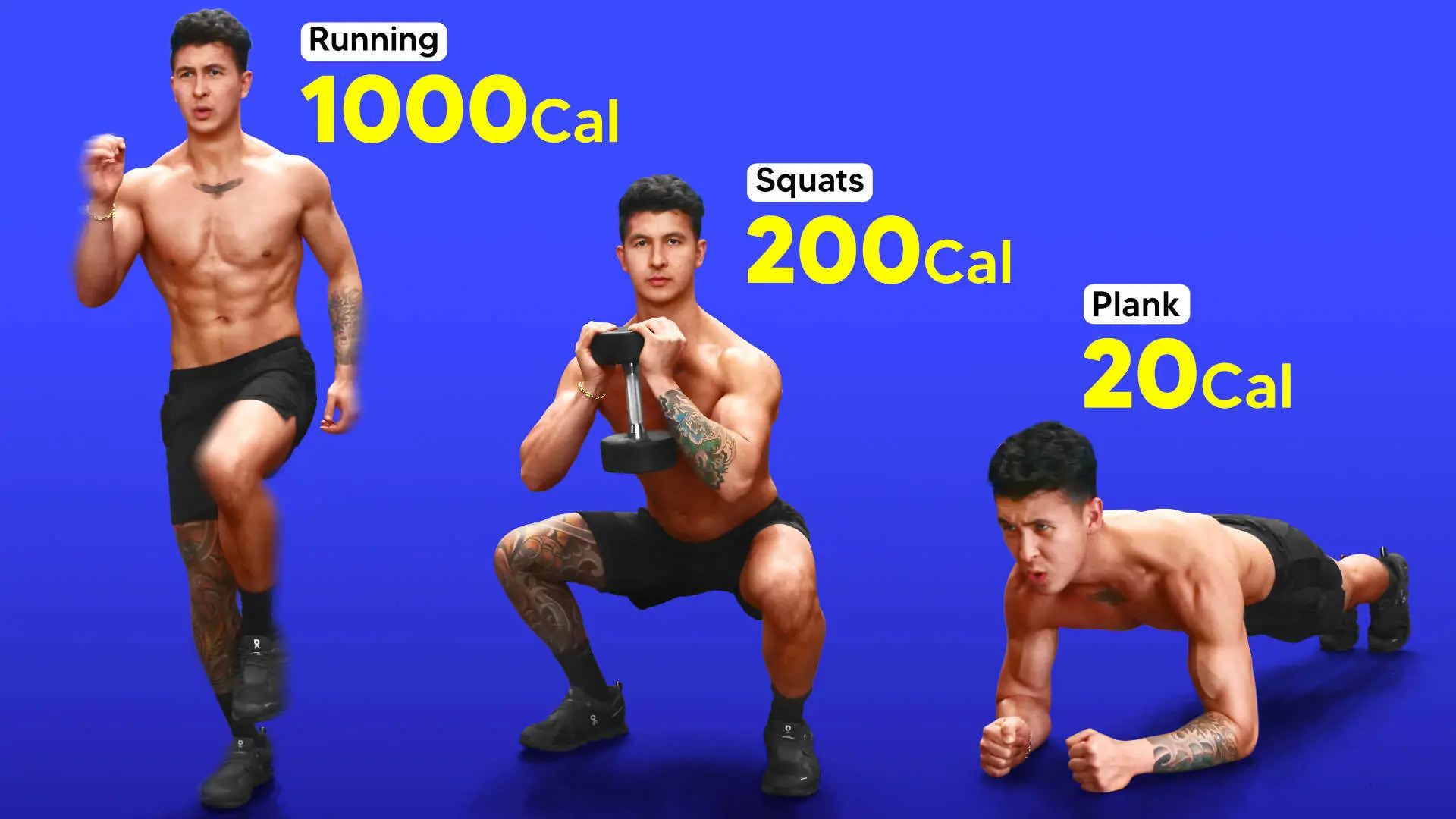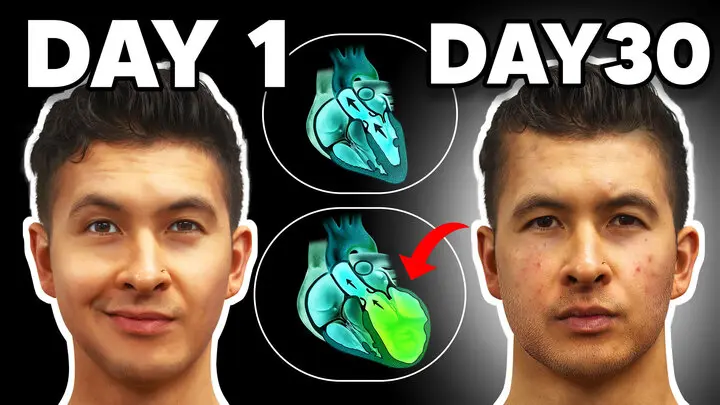How To Fix and Prevent Knee Pain During Exercise: Stop Ignoring This Muscle!
If you currently experience a nagging pain in your knee during exercises like the squat, then you already know the extent to which this negatively affects your workouts and overall progress.
It’s also likely that you’ve tried to address the problem by either:
- Avoiding certain exercises altogether
- Focusing solely on strengthening the structures around the knee
But the truth is, although there’s several causes of knee pain, it’s often due to a commonly overlooked aspect within most people’s training routines: strengthening the gluteus medius.
Before that: if you're looking for a training program that'll help you train in a balanced way for optimal muscle growth, I've got just the thing for you. I've designed every BWS program to be an all-in-one, science-based process that’ll get you to your dream physique FAST. For more information:
Click the button below to take my analysis quiz to discover the best program for you:
↓
How A Weak Gluteus Medius Contributes to Knee Pain During Exercise
The gluteus medius (as pictured below) is one of the lesser known glute muscles but plays a vital role in key movements at the hip.
And when the gluteus medius is weak, you’re unable to properly control your femur. As a result it slightly rotates inward to compensate - which happens anytime you stand, walk, or perform lower body exercises like the squat for example.
...And this inward rotation creates excessive stress on the knees in different areas, hence creating the knee pain you might be feeling.
And not only do multiple studies agree with this and show a strong positive correlation between a weak gluteus medius and resulting knee pain...
But studies ALSO indicate that strengthening a weak gluteus medius seems to drastically reduce knee pain and joint loading.
With one 2011 study by Dolak and colleagues demonstrating a 43% reduction in knee pain in just 4 weeks after incorporating gluteus medius strengthening exercises:
Stop Ignoring This Muscle!
So it’s clear that if your gluteus medius is in fact underdeveloped...
...which is likely the case if you sit for most of the day OR don’t exclusively train this muscle.
Then strengthening it should be your priority when it comes to alleviating knee pain.
And regardless of if you feel pain or not, it’s still a crucial muscle to train since it has been proven to:
- aid in lower body exercises (especially the squat)
- boost athletic performance
- prevent future problems like lower back pain and IT band issues from arising
Therefore, in this article, I’ll cover:
- How to test for gluteus medius weakness
- The best exercises to strengthen it
- How to combine this all into a routine for you to follow.
Let's get started!
1. Testing For Glute Medius Weakness
One easy and quick method to indicate if you have a prominent weakness in your gluteus medius is with something called the "Trendelenburg Test".
Possible Indication: Trendelenburg Test
Simply stand with your feet shoulder-width apart and lift one foot off the ground.
Normally, your pelvis should remain neutral like so and you should be able to comfortably stay in this position.
However, if either:
- Your hip drop towards your lifted leg
- OR you have to excessively lean your upper body towards your planted leg in order to hold the position
Then it’s likely that your gluteus medius on the planted leg side may be weak.
Possible Indication: Compensations During Exercise
Another simple indication is assessing how your knee tracks during lower body exercises.
If for example during single leg movements like lunges or the Bulgarian split squat, your knee tends to track inwards as you perform them:
And/or you tend to compensate with excessive leaning over as you perform your reps:
Then this is another good indication that the gluteus medius may be weak and not doing its job.
Possible Indication: You've Never Exclusively Trained This Muscle
And lastly, if you’ve never exclusively trained your gluteus medius and feel a strong, intense burn in the hips when performing the exercises I’ll provide... Then there’s a good chance that it is in fact underdeveloped.
2. The Best Gluteus Medius Strengthening Exercises
Now as for the best exercises to strengthen the gluteus medius, two recent large systematic reviews have compared the activation of the gluteus medius during a variety of different exercises.
These studies will serve as our primary resource for optimal exercise selection of the glute medius.
However, rather than simply performing the highest activating exercises right away, it’s best in your case to:
Gradually strengthen the gluteus medius by progressing from lower to higher demanding exercises.
...which is exactly what we're going to do.
Exercise 1: Side Lying Hip Abductions
One low demanding yet suitable non-weight bearing exercise to start out with is something called side lying hip abductions.
Research shows are effective at targeting the gluteus medius while minimizing unwanted activity from stronger muscle groups like the hip flexors. Simply meaning that they're a great way to first experience what it's like to fire this muscle properly.
To do them, lay on your side with your legs straight and feet together. In a controlled manner, lift your top leg to roughly 45 degrees WITHOUT any rotation of your pelvis.
Your pelvis should instead stay pointing straight away from you.
You also don’t want to rotate your toes towards the ceiling to compensate. Instead, you can keep them very slightly pointed towards the floor to better activate the gluteus medius.
When done properly, you should feel a strong contraction in the gluteus medius of the leg you’re raising up as shown here:
Exercise 2: Lateral Band Walks
Once you feel comfortable with the previous exercise, you can then move onto an excellent weight-bearing exercise: lateral band walks.
For these, simply place a band around your knees, get into an athletic stance, and take small controlled lateral steps without excessively swaying your upper body. Your pelvis and toes should remain facing straight.
And if you were walking to the right for example, you’d want to feel a strong contraction in your right gluteus medius as shown here:
In addition, as shown in this 2015 systematic review:
Gluteus medius activation increases as you move the band from the knees, to the ankles, to the feet, when performing this exercise.
...which just means that band placement is another good way for you to progress the exercise overtime as you strengthen your gluteus medius.
Exercise 3: Side Plank Hip Abductions
This last exercise and the final progression is something called side-plank hip abductions.
This gluteus medius strengthening exercise was shown in both of the systematic reviews mentioned earlier to elicit the highest activation of the gluteus medius.
To perform them, simply:
- Get into a side plank position by raising your hips up
- Lift your top leg up just how we did with the side-lying hip abductions mentioned earlier
The same key points apply for this exercise as well.
And again, you can add a band around your knees or ankles during this movement to further progress it.
Looking to learn how you can target each of your muscle groups appropriately (and effectively) – in addition to the chest? Then check out our 3-on-1 coaching program. My team of qualified personal trainers and nutritionists (plus myself!) will take the guesswork out of training, nutrition, and even mobility work - so you can focus on what matters: making gains. If you're interested:
Click the button below to find out more about the 3-on-1 coaching program:
↓
3. Gluteus Medius Strengthening Routine (Action Plan!)
So to sum all these exercises up, here’s what you can do to get started.
Step 1:
Start out with the side lying hip abduction for 3-4 sets for 10-15 reps a few times a week. Focus on first really feeling your gluteus medius work before progressing it by adding a resistance band to the movement.
Step 2:
Once you feel comfortable with step 1, you can then progress to the other two more difficult exercises discussed. Again, you can progress these movements with the use of a band and band placement.
Perform these two exercises a few times a week for 3-4 sets each, and within a rep range of 10-15 reps. This can be done either at home or within/after your leg workouts for example. But regardless, they should remain a staple in your weekly routine.
Step 3:
And finally, if you’re eventually able to do so without pain, an excellent way to ensure you’re firing your gluteus medius during movements like the squat is to place a band around your knees.
Forcing your knees to push out against the inward resistance will help you feel what it’s like to properly use this muscle during the squat.
Mini-Resistance Bands - Your Secret Weapon
If you don’t currently have any resistance bands, I would highly suggest that you invest in some for the reasons previously discussed in this article. Not only does it boost gluteus medius activation and show you what it feels like to properly activate this muscle... But it also enables you to easily progress these movements as you strengthen the gluteus medius overtime.
And for those interested I do have Built With Science mini resistance bands available here. They come in sets of three bands that progressively increase in resistance such that you are able to easily progress overtime.
Anyways, that's it for this article. I hope you enjoyed this one and hopefully this explains some of the nagging knee pain you’ve been experiencing! Let me know in the comments if you have any questions/concerns I can help you with. And as always, don’t forget to show me your support by giving me a follow on Instagram , Facebook , and Youtube where I’ll be posting informative content on a more regular basis. Cheers!
And for those looking for a complete step-by-step program that uses science to show you how to properly train AND eat week after week to transform your body in the most efficient and injury-free way possible, then:
Click the button below to take my analysis quiz to discover the best program for you:
↓






